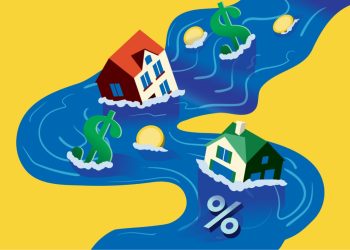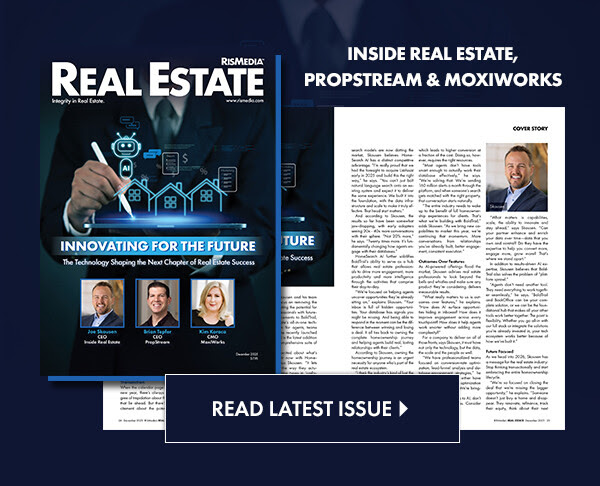Real estate has changed—maybe forever.
Since the upheaval of 2020, which began with a global pandemic and has since sprawled into a variety of fundamental shifts in how people approach work and life, real estate professionals have guessed at just how much this will affect the notoriously slow-moving housing industry. Would remote work have only a marginal or transitory effect on the truism of “location, location, location?” Are people moving further, buying later or financing less? What demographics are now most likely to buy—or sell—a home?
While only time will tell just how resilient these trends are, the National Association of REALTORS®’ (NAR) annual Profile of Buyers and Sellers found what can only be described as some monumental shifts in how people are buying and selling homes.
“It really is a confluence of factors at this moment,” says Jessica Lautz, vice president of demographics and behavioral insights at NAR.
For the multiple decades that NAR has conducted this survey, most of the shifts were fractional, reflecting the glacial pace of demographic changes that housing is fundamentally based on. Many of the changes tracked in this report represent historic jumps or drops.
Some of the headlines from the 134-page document: the proportion of first-time homebuyers hit an all-time low, dropping 8% from last year. The age of both homebuyers and sellers also spiked to historic highs, and the median distance people moved to a new home grew by more than 200%.
There was also a significant shift away from the suburbs, breaking another decade-long trend as consumers flocked to the open space and affordability of small towns or rural settings—potentially upending even more long-held assumptions about real estate.
Lautz says the first-time homebuyer trend is perhaps the most concerning, and also likely to endure beyond this year.
“To say if it’s a blip or not on the radar—until we have substantial building in the housing market, this may be a factor moving forward, that we just have this lagging share of first-time homebuyers,” she said.
The big reset
While Lautz makes it clear that the report is not about trying to forecast the likely path of these trends, some of the changes have clear foundations in factors that are not fading with the pandemic.
“Student loan debt, that’s not necessarily a new issue, and it’s not necessarily going away for everyone,” she says. “We also know that child care expenses, or looking at credit card debt or having a car note—all those factors hold back potential buyers.”
It is the trends around age and first-time buyers that Lautz and the report highlight. The average age of a first-time buyer is now 36—up from 33 last year, and 30 in the year after the housing crash of 2008. The average seller is now 60 years old.
Lautz says she is “awestruck” by just how significant these shifts are.
“It is striking, and I think it speaks to the wealth that repeat buyers and owners have really built,” she says. “It also speaks to people living longer and working longer and feeling confident taking on the mortgage later on in life.”
The age of first-time buyers might indicate a ceiling, she adds, as certain life choices that younger folks have tried start to become less appealing.
“If we think about a first-time buyer…for many, they do move directly from a family members’ home into homeownership. They are skipping rent, they are able to get their debt-income ratio on track,” Lautz explains. “For somebody who is 36, that’s probably not an attractive scenario to live with a family member at that point.”
Likewise, there is no indication that sellers are going to be putting their houses on the market at an earlier age, with many locked into lower interest rates. For many, renovations and home equity loans will likely remain preferable at least for a significant period of time, Lautz says.
Another dramatic and relevant change to anyone working in real estate is the much-discussed effect of remote work and “the great resignation” on how far people move when they buy a home.
For years, family and other personal factors have been increasingly important in when people move, but that also hit an all-time high, with 37% of people citing convenience to friends and family as the main motivation in choosing a location—tied with the number who say affordability was their primary reason. The number of people citing convenience to job was 33% this year—down from 50% a decade ago.
Homes purchased in suburbs have for years made up about 50% of the total (51% last year). This year, they made up 39%. That drop came as buyers purchased more homes in rural areas and small towns, up 6% and 9% this year, respectively.
Another huge shift is how far people move. For years, the median distance hovered around 15 miles. In 2022, it was 50 miles.
All of this is tied to what has become a clear shift to remote or hybrid work options—though Lautz isn’t convinced that all of these trends will settle at 2022 levels, with more complexity in the factors driving these behaviors..
“You’ve seen plenty of headlines where people have moved to these small towns, and now they’re saying, ‘Wait, I don’t like it,’ and they move back,” she notes. “But affordability is certainly going to be a factor there as well, and proximity to friends and family—it’s not necessarily one answer…it will be interesting to see what we get next year for those median miles moved.”
More than a feeling
The upheaval of the last couple years has done more than shift priorities—it has created new economic realities for many Americans. Wealth is increasingly becoming concentrated and the have-nots are losing out—on homeownership and many other traditionally middle-class opportunities and assets.
As is often the case, these issues are affecting some racial groups more than others, with Black families actually losing ground in homeownership, making up only 6% of first-time buyers and a paltry 2% of repeat buyers.
“We know that potential Black homebuyers who are renters are paying a disproportionate amount of their income toward their rent, and we know that could be a bigger factor for them when we saw rents rise so severely in the last year,” Lautz says.
At the same time, a staggering 27% of repeat buyers overall paid all cash for homes, which Lautz attributes at least partially to the burst of home equity created over the last couple years, as even moderate-income families were suddenly flush with housing wealth.
“I do think that has to do with that housing equity,” says Lautz, “but I also think it has to do with a move to a more affordable area. If you’re moving from perhaps an urban city center or a closed-in suburb, and you’re moving to a rural area or a small town, that housing affordability may have played in. You could have paid all cash or financed a very small portion.”
Again, that uneven distribution of wealth is creating new dynamics, although what that means for real estate remains to be seen. More and more non-traditional regions or markets could begin drawing wealthy buyers, while the effect of rent burdens on Black families and other groups could accelerate historically resilient barriers that have prevented many people from achieving homeownership.
Another trend that is possibly rooted in economics and affordability is the share of nontraditional buyer households (either unmarried couples or “other” household compositions), which hit an all-time high at 23%. Lautz cautions that marriage rates have fallen for years, meaning that trend could be misleading to some degree. But she adds that the ongoing affordability crisis is also a factor, and could continue to create scenarios where buyers are forced into novel arrangements in order to afford a home.
“People are partnering up in different ways,” she says. “It could be quite difficult…I think we could see a growing share of both unmarried couples and roommates purchasing homes together.”
Two numbers in the report—average tenure in home, which snapped back to 10 years after falling to eight in last year’s survey, and the aforementioned increase of seller’s age—might continue to rise, Lautz thinks, because of so-called “2 percenters.” People who locked in incredibly low rates in 2020 and 2021 have a strong motivation to stay put, which could affect the market for years or even decades.
“People who financed during that time period, it’s very possible they will say, ‘I’m never moving,’” she explains. “They will remodel, they will reinvent how they’re using that home, but they will say, ‘I won’t move from here.’”












